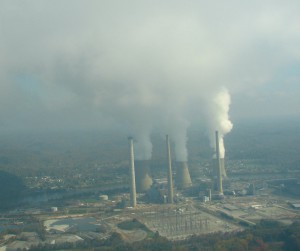- Carbon capture and storage (CCS) is the removal and storage of industrial carbon dioxide emissions. Carbon capture and utilization (CCU) is the capture of carbon dioxide emissions that are then recycled to be used in another application such as enhanced oil recovery (EOR).
- CCS currently removes less than 0.1 percent of carbon dioxide emissions globally per year, about 40 MTPA (Million Metric Tons Per Annum).
- To achieve net zero emissions the current capacity of CCS must increase 100 fold by 2050.
- Typically, large-scale CCS infrastructure design and construction costs run in the hundreds of millions and sometimes billions of dollars. (See page 25 here.) Costs currently are around $58 dollar per metric ton “captured.”
- Companies need large injections of capital from governments (direct grant funding; your tax dollars) to make CCS affordable in any setting.
- While the risk of leakage of stored carbon dioxide is small, it is not zero (this increases future liability for investors).
- According to the National Energy Technology Lab, when it comes to commercial use of carbon dioxide (CO2), by far the most extensive use of CO2 in the United States is for enhanced oil recovery, about 50 MTPA.
- Approximately 30 MTPA (million metric tons per year) of CO2is used for food and beverage industries but CO2 for beverage carbonation and food industry must meet stringent standards of purity; therefore, it is usually obtained from sources such as corn-to-ethanol plants, and breweries (not fossil fuel sources).
- EPA’s list of major sources of carbon dioxide emissions in the USA in 2019: Transportation 29 %, Industry 23%, Electricity 25%, Agricultural 10%, Commercial and Residential 13%; currently only the power generation sector (25% of emissions) has been researched as to efficacy of CCS.
- Beyond selling to oil and gas companies for EOR (enhanced oil recovery), CO2 is not exactly a valuable commodity, so few viable business cases exist to sustain a CCS industry on the scale that is necessary or envisioned to stabilize the climate.
- There are 12 possible determinants of CCS project outcomes: technological readiness, credibility of incentives, financial credibility, cost, regulatory challenges, burden of CO2removal, industrial stakeholder opposition, public opposition, population proximity, employment impact, plant location, and the host state’s appetite for fossil infrastructure development.
- The addition of an amine-based CCS system would double the amount of water usage for a coal-fired power plant.
- Injected CO2 can cause the creation of carbonic acid when in the presence of water, this in turn can leach metals from the surrounding rock strata resulting in groundwater contamination.
- Because the addition of CCS adds significantly to the water usage of a typical power plant, the use of CCS in areas of water shortage issues is concerning.
- The addition of CCS decreases the efficiency of a power plant as the CCS facility requires not only water but also energy; in the end this may result in a negative overall carbon sequestration.
- The CCS think tanks promoting CCS fail to mention the failures of several CCS projects. “According to a recent report, 80% of projects that seek to commercialize CCS technology have failed.” These include: West Australian Gorgon Plant (only captured 30 percent and cost $3 billion), Petra Nova $1 billion with $190 million US grant suffered outages on 367 days and ¼ of these were due to problems with the CCS system, Enchant Energy seeks $1 billion in low interest loans to start the world’s largest coal-fired CCS plant and is already off target for starting date and is currently burning w/o CCS in New Mexico.
- We have reached the coal cost crossover where existing coal is more expensive than cleaner alternatives. “Today, local wind and solar could replace approximately 74 percent of the US coal fleet at an immediate savings to customers. By 2025, this number grows to 86 percent of the US coal fleet.” Why add CCS to old coal power plants?
- Over 50 of CCS think tanks are oil and gas energy companies.
- CCS does nothing to address externalities from coal and fracked gas, only applies to emissions in stack gas and does not remove other pollutants such as volatile organic compounds.
- CCS does nothing to help the hidden costs of fossil fuel energy that are “non-climate” related such as health effects.
- Unlike wind or solar, carbon capture never reduces air pollution and always has a capture equipment cost.
- Carbon capture power plants have upstream emissions, such as leaks and combustion, from mining and transporting a fuel like coal or natural gas that reduce the actual amounts of CO2 sequestered.
- CCS research projects received $110 million in 2019, $72 million in 2020, and $75 million in 2021 from the DOE . This is tax-payers’ money that could be used for renewable energy and energy efficiency projects.
- According to section 45Q of the tax code, companies get paid $50 per metric ton of CO2.
- Mark Jacobson said, “CCS gives people hope that you can keep fossil fuel power plants alive,” when in fact it is a false solution and investing in renewable energy is a better option for the environment and human health. “Carbon capture will lock us into decades more of fossil fuels, is not feasible at scale, and diverts money and political attention from the real, bold solutions we need.”
Sources
https://insideclimatenews.org/news/07122010/study-charts-how-underground-co2-can-leach-metals-water/
https://www.ncbi.nlm.nih.gov/pmc/articles/PMC2854354/pdf/267_2010_Article_9434.pdf
https://pubs.acs.org/doi/abs/10.1021/es102235w
https://pubmed.ncbi.nlm.nih.gov/21329343/
https://www.epa.gov/sites/default/files/2021-04/gases-by-source-2021-caption.png
https://www.sciencedaily.com/releases/2021/03/210322174959.htm
https://netl.doe.gov/research/coal/energy-systems/gasification/gasifipedia/eor
https://www.epa.gov/sites/default/files/2021-04/gases-by-source-2021-caption.png
https://carboncapturecoalition.org/about-us/
https://energyinnovation.org/publication/the-coal-cost-crossover/
https://www.netl.doe.gov/coal/carbon-storage/faqs/carbon-storage-faqs
https://www.sciencedaily.com/releases/2021/03/210322174959.htm
https://news.stanford.edu/2019/10/25/study-casts-doubt-carbon-capture/
https://pubs.rsc.org/en/content/articlelanding/2019/ee/c9ee02709b/unauth#!divAbstract









